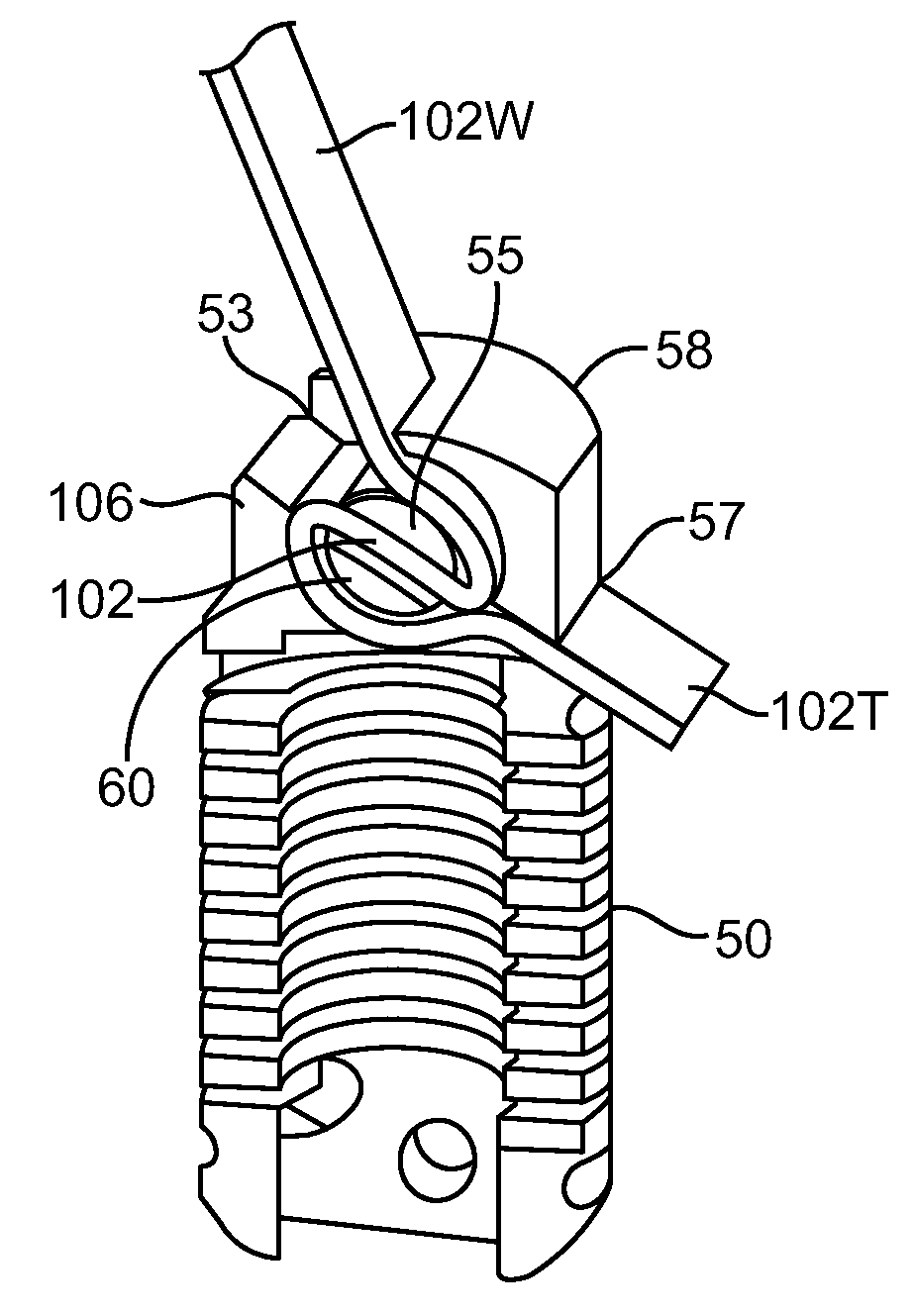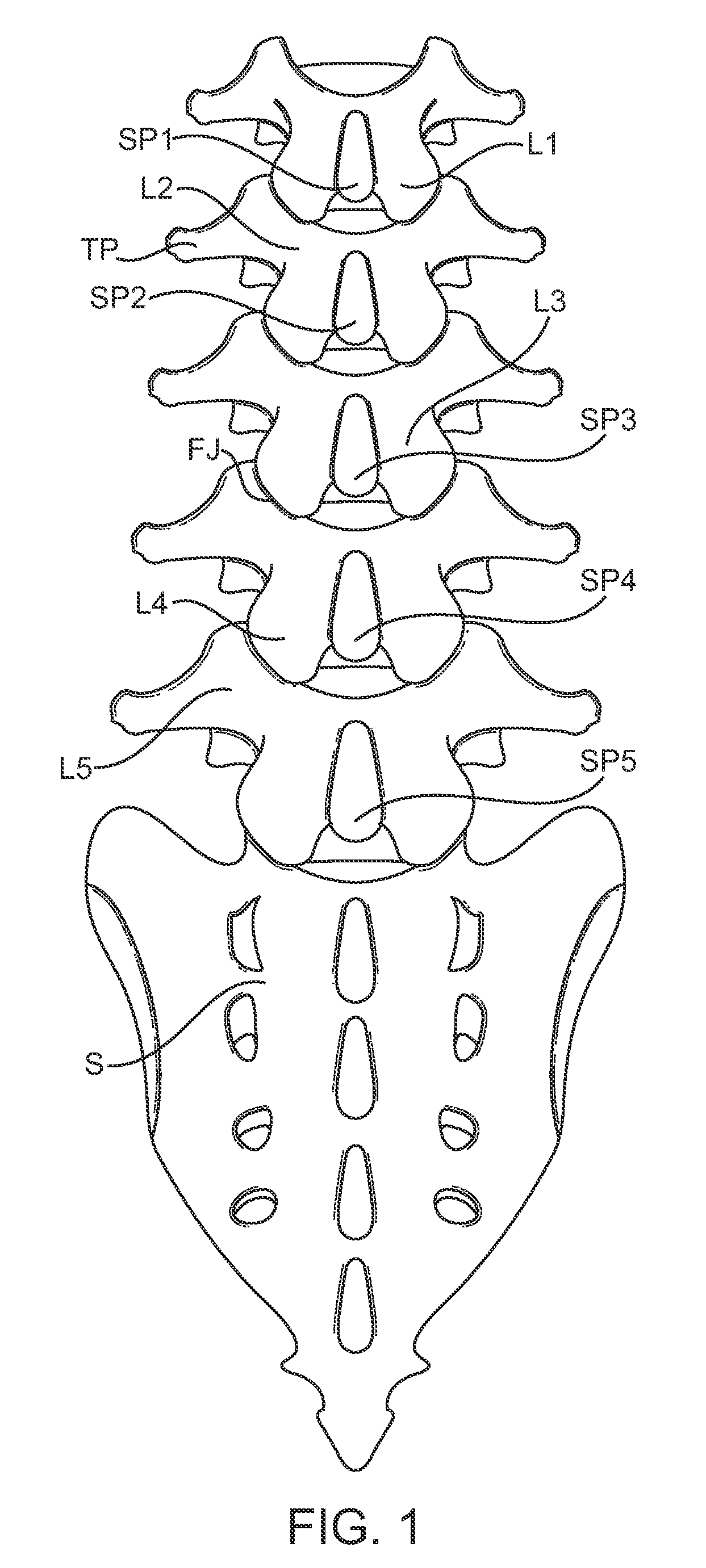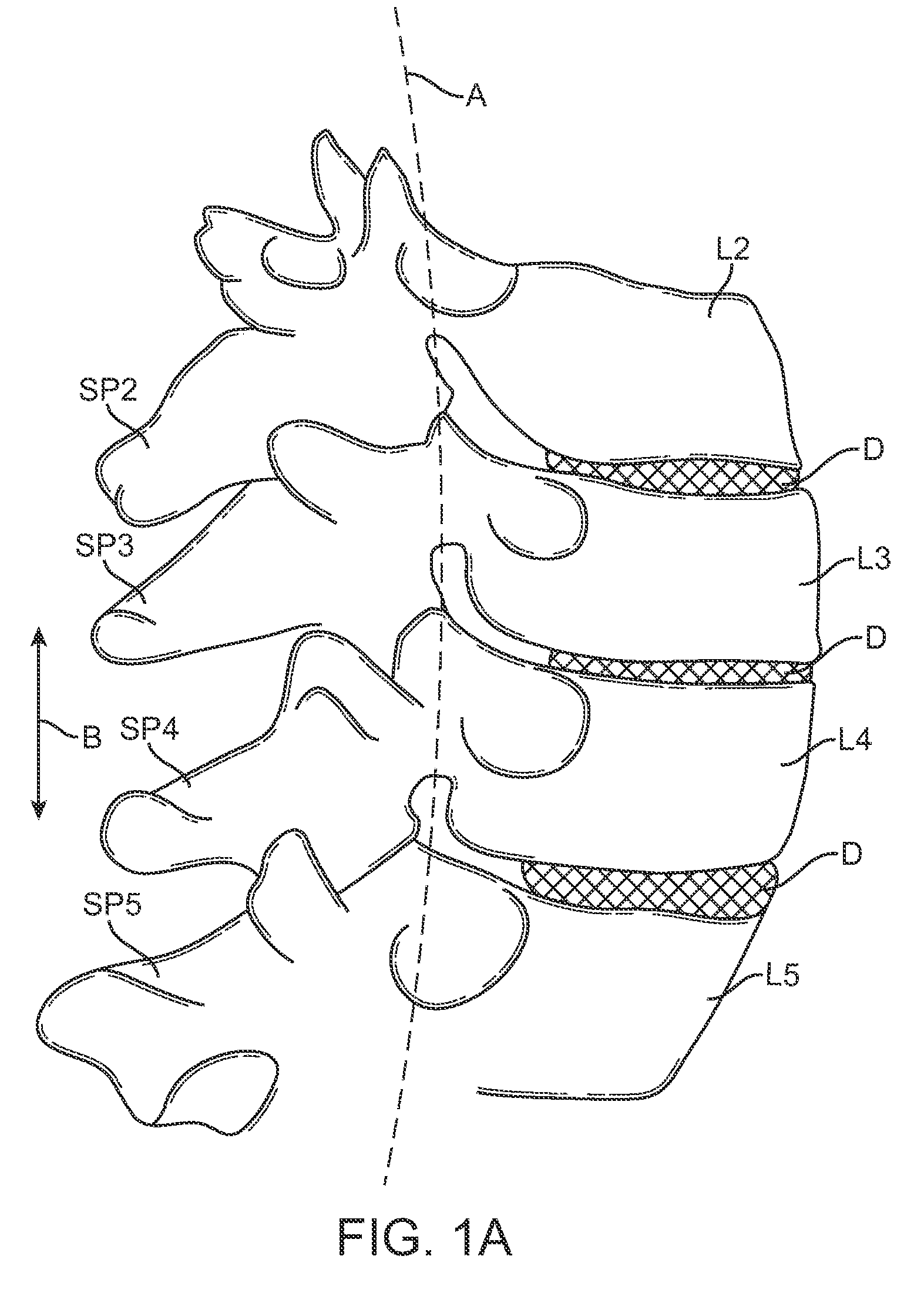Methods and apparatus for locking a band
a technology of locking and band, applied in the field of medical methods and equipment, can solve the problems of limiting the translation of the roller along its axis, the translation of the thread, etc., and achieve the effects of reducing the flexion of at least one, less invasive, and convenient operation
- Summary
- Abstract
- Description
- Claims
- Application Information
AI Technical Summary
Benefits of technology
Problems solved by technology
Method used
Image
Examples
Embodiment Construction
[0040]FIG. 1 is a schematic diagram illustrating the lumbar region of the spine including the spinous processes (SP), facet joints (FJ), lamina (L), transverse processes (TP), and sacrum (S). FIG. 1A is a schematic illustration showing a portion of the lumbar region of the spine taken along a sagittal plane and is useful for defining the terms “neutral position,”“flexion,” and “extension” that are often used in this disclosure.
[0041]As used herein, “neutral position” refers to the position in which the patient's spine rests in a relaxed standing position. The “neutral position” will vary from patient to patient. Usually, such a neutral position will be characterized by a slight curvature or lordosis of the spine where the spine has a slight anterior convexity and slight posterior concavity. In some cases, the presence of the constraint of the present invention may modify the neutral position, e.g. the device may apply an initial force which defines a “new” neutral position having so...
PUM
 Login to View More
Login to View More Abstract
Description
Claims
Application Information
 Login to View More
Login to View More - R&D
- Intellectual Property
- Life Sciences
- Materials
- Tech Scout
- Unparalleled Data Quality
- Higher Quality Content
- 60% Fewer Hallucinations
Browse by: Latest US Patents, China's latest patents, Technical Efficacy Thesaurus, Application Domain, Technology Topic, Popular Technical Reports.
© 2025 PatSnap. All rights reserved.Legal|Privacy policy|Modern Slavery Act Transparency Statement|Sitemap|About US| Contact US: help@patsnap.com



